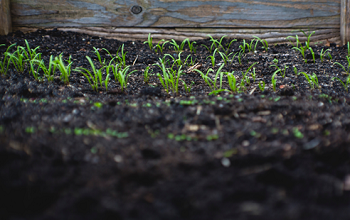Changes to the composting process
December 20, 2019

Composting has changed a lot over the years, and there are many things we used to do that just don’t work anymore. Here, Master Composter, David Cannon, discusses how he’s changed what now goes into his compost bin.
“Climate change is high on the agenda at last, and everything we do now needs to be viewed through the prism of a climate emergency. As home and allotment composters, we have always been ahead of the game when it comes to combating climate change. Our fruit and veg waste doesn’t need to be transported anywhere and in the composter, the material decomposes more aerobically reducing methane emissions.
“Also, we don’t need to import so much commercial compost, not to mention a host of other environmental benefits. So for anyone with a garden or allotment wanting to translate good intentions into actions, home composting offers a very easy, cost effective and satisfying way of doing your bit.
“For years, as Master Composters, we would have encouraged people to compost tea bags. Ideal – fine vegetable matter wrapped in paper. Now we know different. Most composted tea bags will leave behind a “ghost” of synthetic plastic material to pollute the soil and be taken up by invertebrates and travel up the food chain. Some tea bags have changed to plastic-free but by no means all, so my advice now is not to compost tea bags unless you are sure they are plastic-free. Or do what I do, which is to dry them outside and rip them, adding the wonderful tea leaves to the composter and recycling the paper in the paper bank. I’m not sure everyone is ready for such obsessive behaviour though! Alternatively, you could make the change to loose leaf tea.
“In a similar vein, I used to recommend adding vacuum cleaner dust to the compost on the basis that it is nearly all human and pet cells and hair. Now, in more enlightened times, I would not recommend that as the dust contains all sorts of plastic fibres and fragments and the best place for it is the residual waste.
“These are just a couple of examples of materials that cannot be composted in the way we used to, but it only amounts to a small percentage of what can be composted.
“I usually give my Green Johanna composter a winter jacket of bubble wrap and an old blanket over the lid. This insulation usually comes off in the spring but this year I read that composters of this type can get too hot. Insulation works both ways so, being lazy, I removed the blanket but left the bubble wrap in place to see what happened. It seems to work very well with lots of mini-beasts inhabiting the heap over the summer and the level inside the composter steadily dropping. It’s not very often laziness pays off but maybe this time it has? I think I might treat it to fresh, albeit re-used, bubble wrap next Autumn though.”










